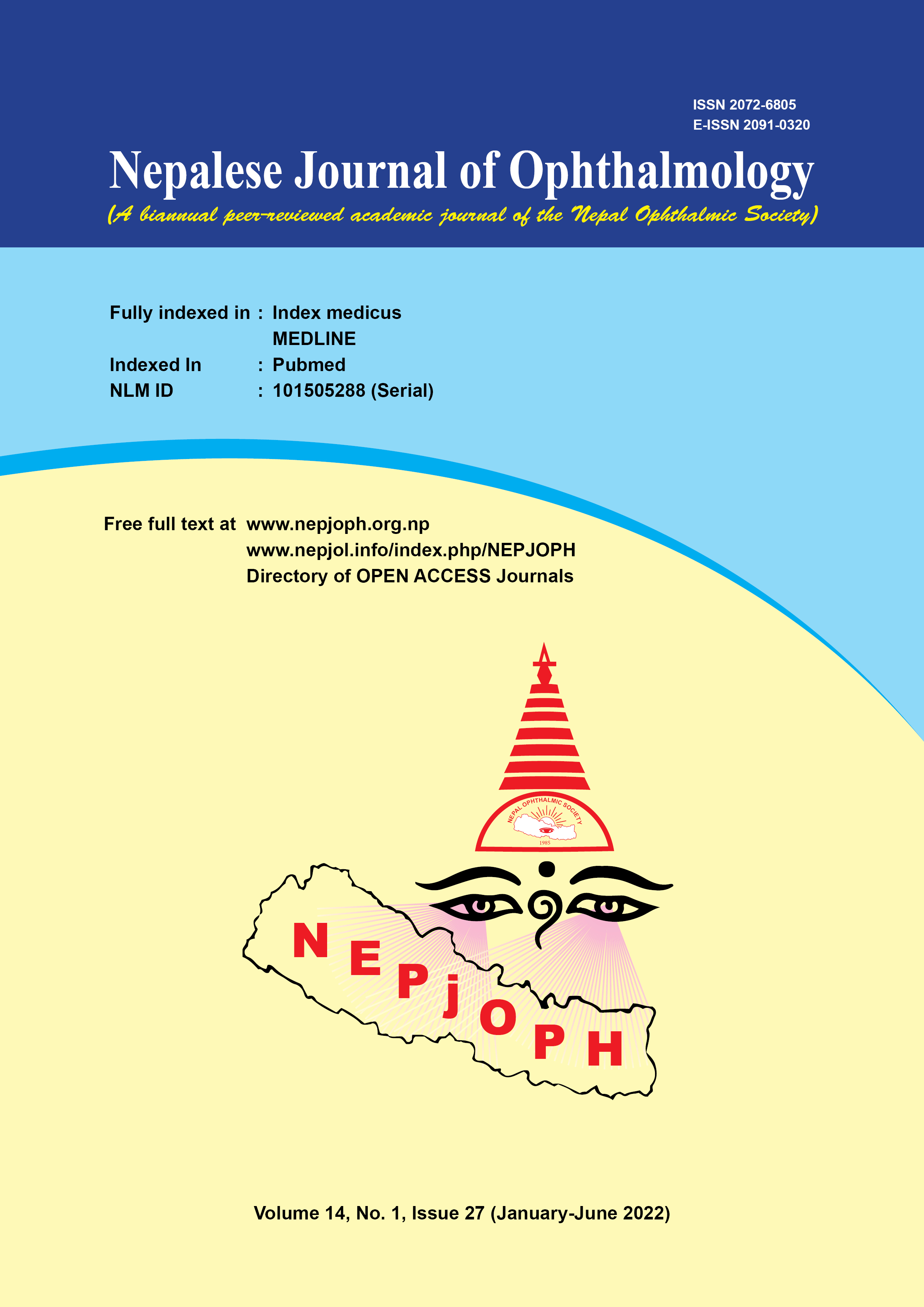Development of Immersive Virtual Reality Environment for Assessment of Functional Vision in people with Low Vision: A Pilot Study
DOI:
https://doi.org/10.3126/nepjoph.v14i1.31199Keywords:
Activities of Daily Living, Functional Vision, Low Vision, Virtual Reality, Visual ImpairmentAbstract
Introduction: Virtual Reality technology helps in creating virtual environments for evaluation of visual performance of low vision individuals with holistic experience. The purpose of this study was to develop a virtual reality (VR) platform for the objective assessment of functional vision in patients with low vision in two categories, central and peripheral vision loss .
Materials and methods: Focus group discussions (FGD) were organized to understand the difficulties faced on a day to day basis by patients with low vision. Based on the results of the focus group discussions, a virtual bank scenario incorporating specific visual tasks was developed. A pilot study was conducted which involved people with normal vision; low vision Patients secondary to central field loss (CFL) and peripheral field loss (PFL). Each subject completed all the tasks in the objective assessment; the data obtained from the assessment were further analyzed to understand the pattern.
Results: Comparing the three groups, there was a significant difference in distance (central field loss was lowest) and near visual angle, and three visual search tasks (peripheral field loss was lowest). In assessing the time taken, peripheral field loss group was again found to take the most time to complete tasks.
Conclusion: Based on a newly developed virtual reality platform, assessment of functional vision of specially abled persons could be tested and was inferior to that of normal sighted persons. in a close to realistic environment. Multiple visual tasks were performed in the virtual environment and the visual performance was compared among all three groups of participants. Participants were matched for age and gender. Irrespective of the nature of tasks, visual performance of the normal group seemed significantly better than people with CFL and PFL.
Downloads
Downloads
Published
How to Cite
Issue
Section
License
Copyright (c) 2022 Nepalese Journal of Ophthalmology

This work is licensed under a Creative Commons Attribution-NonCommercial-NoDerivatives 4.0 International License.
This license enables reusers to copy and distribute the material in any medium or format in unadapted form only, for noncommercial purposes only, and only so long as attribution is given to the creator.




